1940s
Saved pennies crash through ceiling
Aug 1947: Clarence Ellsworth had been saving pennies by dropping them through a crack in his attic floor. Finally, when the number of pennies reached 1,672, the weight of the pennies broke through the ceiling and landed in his living room.This raises the question: how much did 1,672 pennies weigh?
According to Wikipedia, pennies issued before 1982 each weighed 3.11 grams since they were made from 95% copper. After 1982, the U.S. Mint substituted a copper-plated zinc penny that weighed less.
3.11 times 1,672 comes out to 5200 grams (rounding up) — or approximately eleven and-a-half pounds.
I'm surprised that was enough to break his ceiling. Perhaps there were other issues, such as water damage, that contributed to the break.
According to an online inflation calculator, $16.72 in 1947 money would be worth $234.18 today. And the repairs would have cost approximately $175 (in today's money).

Bangor Daily News - Aug 12, 1947
Posted By: Alex - Tue Apr 16, 2024 -
Comments (2)
Category: Money, 1940s
Tobacco Queen

Posted By: Paul - Sun Apr 14, 2024 -
Comments (2)
Category: Awards, Prizes, Competitions and Contests, Beauty, Ugliness and Other Aesthetic Issues, Smoking and Tobacco, 1940s
Bushells Tea: The City of Tomorrow
Posted By: Paul - Sat Apr 13, 2024 -
Comments (0)
Category: Predictions, Yesterday’s Tomorrows, Soda, Pop, Soft Drinks and other Non-Alcoholic Beverages, 1940s, Australia
Beulah’s Tomb
Beulah Acklin of St. Petersburg, Florida died on May 15, 1948, 52 years old. Her husband, mailman Roy Acklin, built a mausoleum for her in Greenwood Cemetery. He fitted up the interior of it to look like a living room. On the wall he hung a blue neon sign with her name, "Beulah".He spent much of his time hanging out at the mausoleum, inviting the public to view it and sign their name in his guestbook, while he recited Beulah's favorite bible verses through a public-speaking system.
In 1983, Beulah's remains were reinterred in Jacksonville.





Pix magazine - Aug 9, 1952
Posted By: Alex - Fri Apr 12, 2024 -
Comments (1)
Category: Death, 1940s
Miss Gary Cigaret
In 1944, a newspaper in Gary, Indiana held a beauty contest to select a "Miss Gary Cigaret." The public were encouraged to vote, with each vote costing five cents. All the funds raised would be used to send cigarettes to American soldiers.Over $15,000 was eventually raised, which was able to buy six million cigarettes (or 300,000 packs).
The contest winner, Irene Kuchta, got to model a bathing suit made of cigarettes.
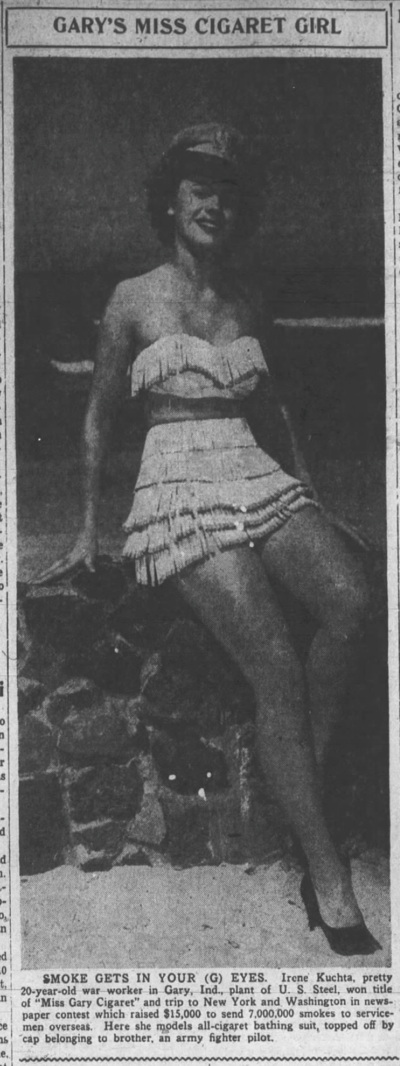
Vidette-Messenger of Porter County - Sep 22, 1944

Windsor Star - Sep 9, 1944
Posted By: Alex - Fri Apr 05, 2024 -
Comments (1)
Category: Awards, Prizes, Competitions and Contests, Fashion, Smoking and Tobacco, 1940s
Ornamental Ash Tray
The entire patent, figure and text, is given below. How I wish the inventor had gone on at length about his design.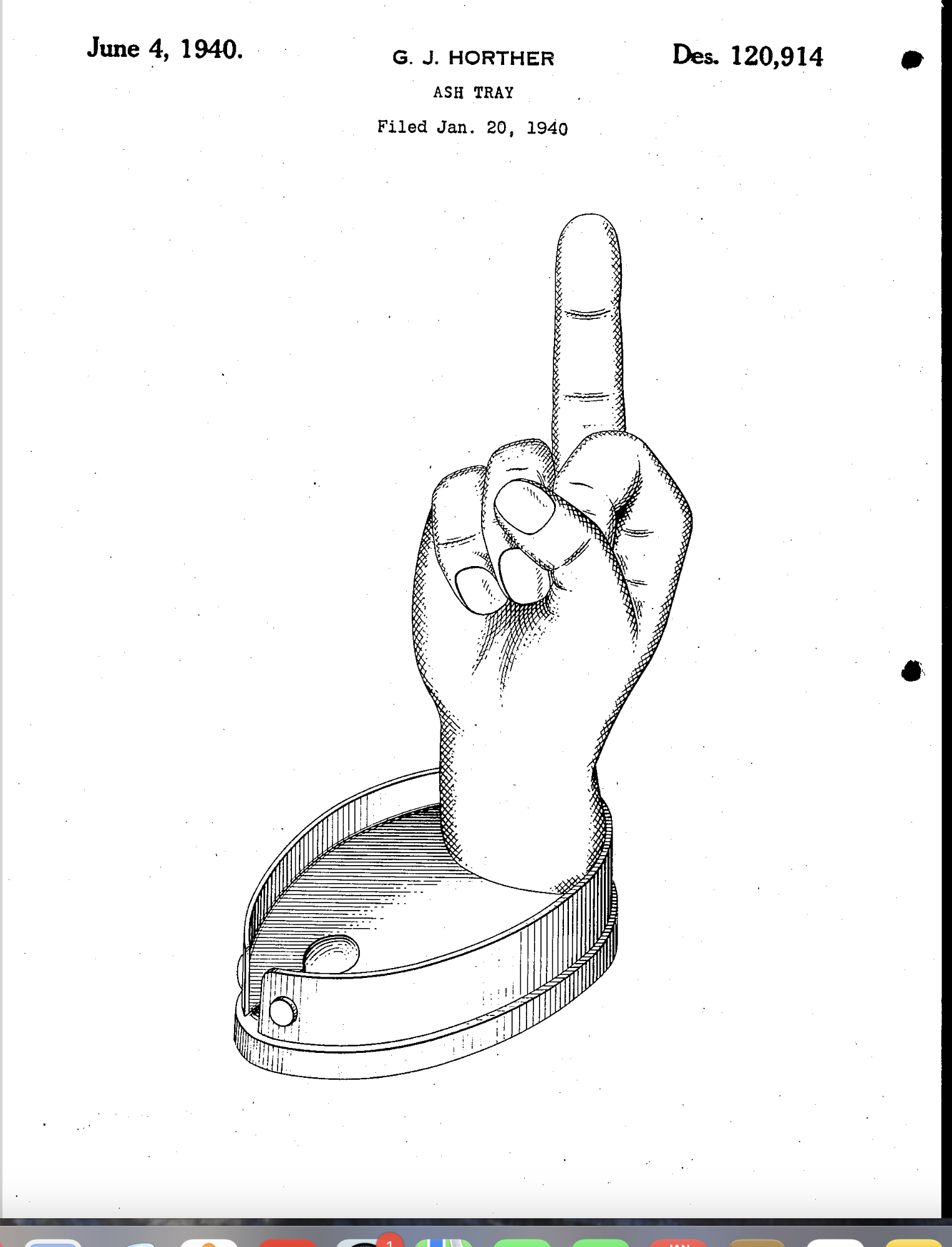
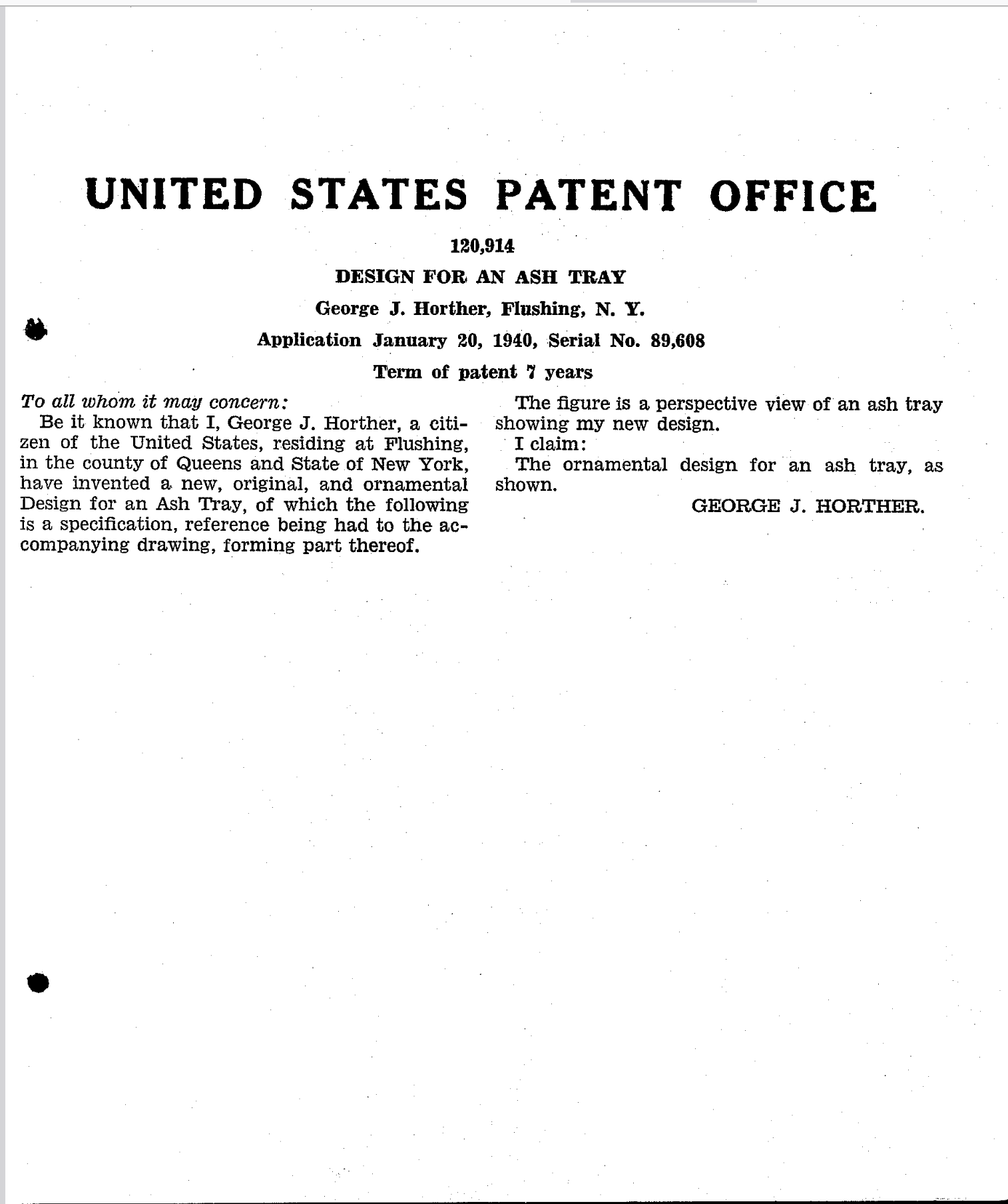
Posted By: Paul - Fri Apr 05, 2024 -
Comments (0)
Category: Obscenity, Patents, Smoking and Tobacco, 1940s
Mr. Coffee Nerves
On a mission to wreck marriages and destroy romance by promoting the consumption of coffee.Personally, I need my morning coffee before I'm at all sociable.
(click images to enlarge)

Spokesman Review - Jan 16, 1949
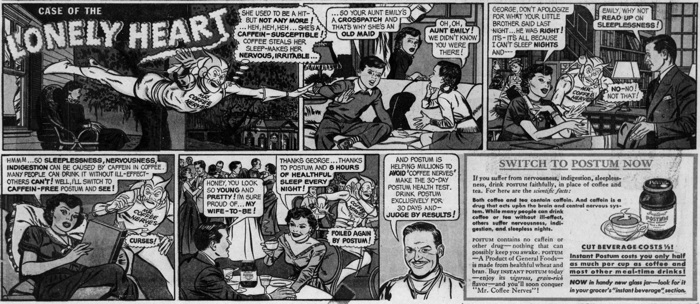
Boston Globe - Sep 11, 1949
Posted By: Alex - Tue Apr 02, 2024 -
Comments (3)
Category: Corporate Mascots, Icons and Spokesbeings, Coffee and other Legal Stimulants, 1940s
The Radioactive Pup of Bikini Atoll
Operation Crossroads page at Wikipedia.

Posted By: Paul - Sat Mar 30, 2024 -
Comments (0)
Category: Military, Atomic Power and Other Nuclear Matters, Dogs, 1940s, South Pacific
Miss British Reinforced Concrete
The title was supposed to be bestowed on an employee of British Reinforced Concrete, but it was given to non-employee Nanette Keay by mistake:"They wouldn't let me leave and so I had to walk past the judges. I was absolutely astonished at winning."
Despite not being an official contestant, they let her keep the title.

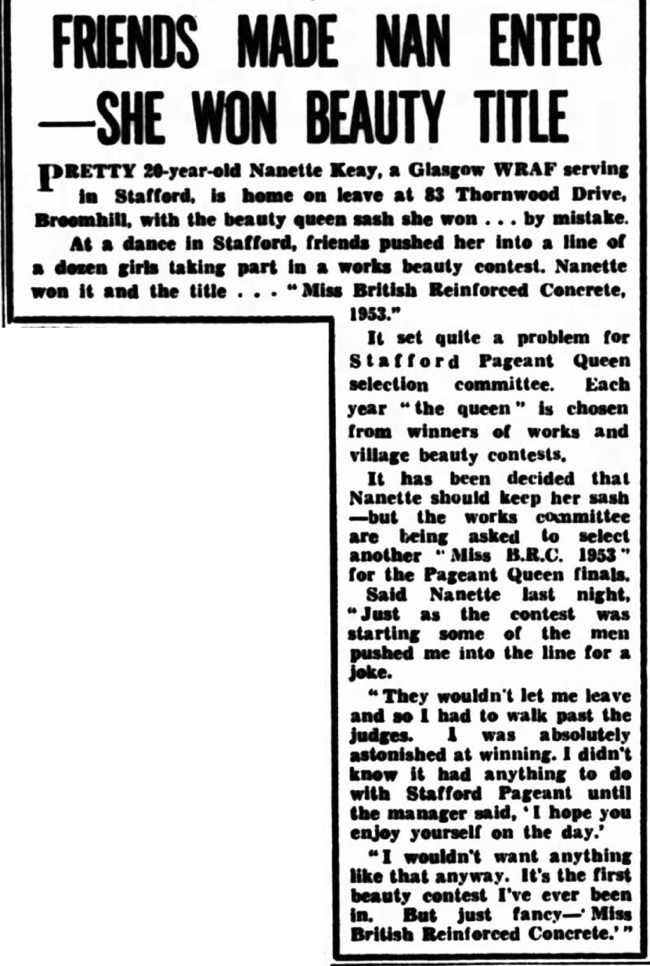
Glasgow Daily Record - Apr 6, 1953
Posted By: Alex - Thu Mar 28, 2024 -
Comments (1)
Category: Awards, Prizes, Competitions and Contests, 1940s
Miracle Face-Bra
"the newest way to make lastex yarn work for you"
Radio and Television Mirror - July 1948
Posted By: Alex - Sun Mar 17, 2024 -
Comments (1)
Category: Beauty, Ugliness and Other Aesthetic Issues, Advertising, 1940s

| Who We Are |
|---|
| Alex Boese Alex is the creator and curator of the Museum of Hoaxes. He's also the author of various weird, non-fiction, science-themed books such as Elephants on Acid and Psychedelic Apes. Paul Di Filippo Paul has been paid to put weird ideas into fictional form for over thirty years, in his career as a noted science fiction writer. He has recently begun blogging on many curious topics with three fellow writers at The Inferior 4+1. Contact Us |




